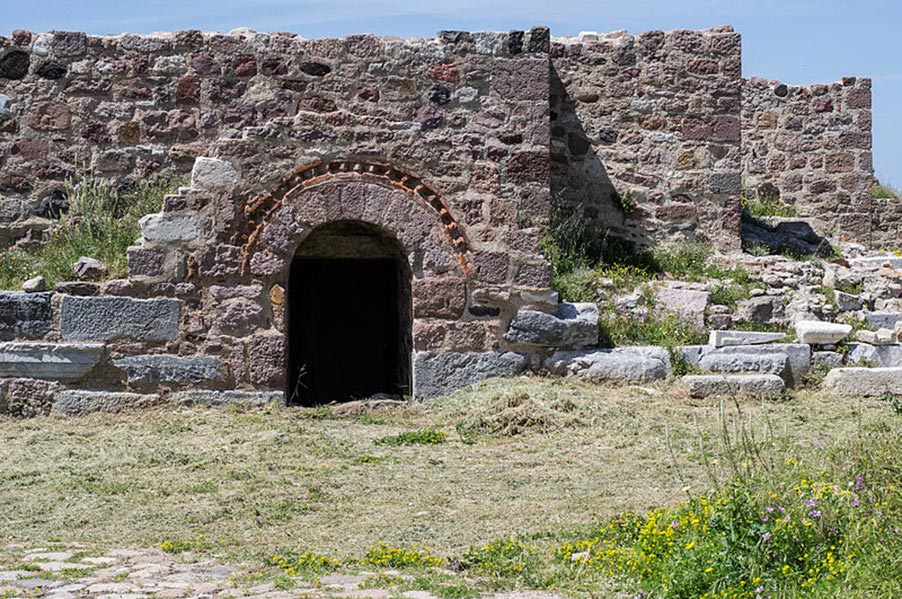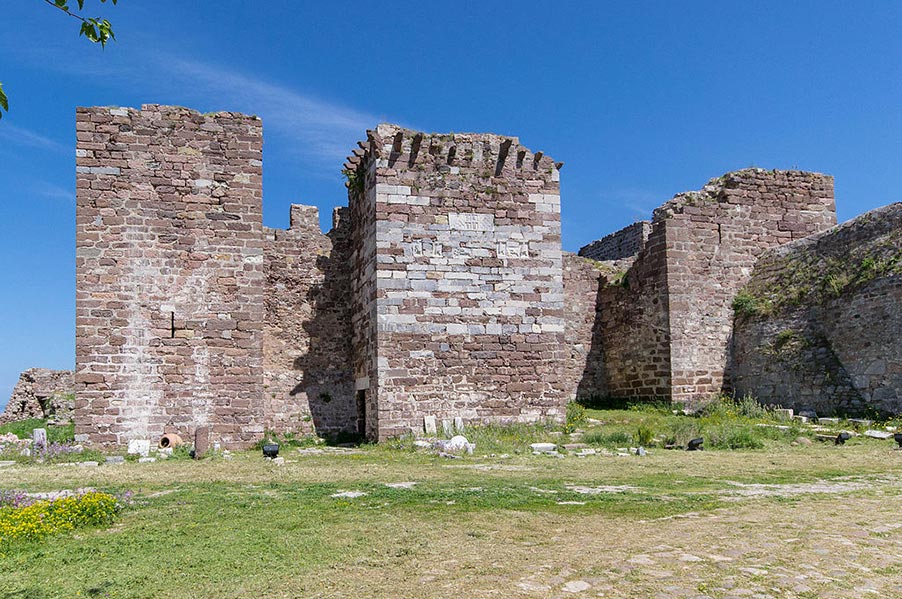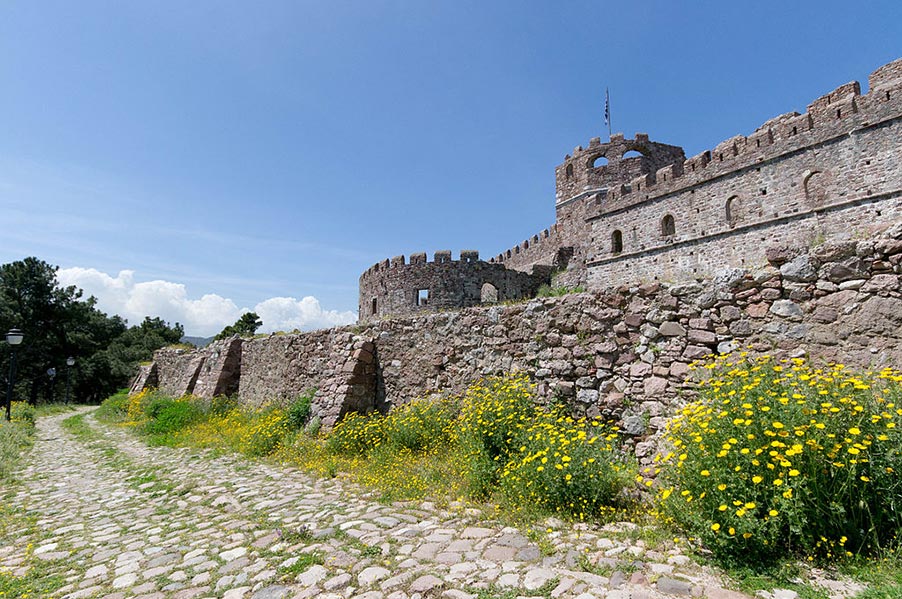- Home
- Lesvos
- Lesvos Entries
- The Castle of Mytilene
Description
The Castle of Mytilene, also called "Fortress of Mytilene", is located in the north part of the city, among a verdant pine forest and the sea. It is maintained in good condition and is one of the largest castles in the Mediterranean covering an area of 200 acres.
The first castle on the site may have been erected during the time of Justinian I (ruled 527–565). The 6th-century castle may have been built on top of an already existent fortress. In the late Middle ages, the castle was the residence of Francesco I Gattilusio and his successors, especially the tower known today as the Queen's Tower. There is also strong evidence that the original acropolis on the site may have included a sanctuary to Demeter, Kore and Cybele.
From a morphological perspective, the castle is divided into three sections:
- The Acropolis or Upper Castle lies in the north and is the highest point of the hill, there is a Thesmophorion and the Castle of Francesco I Gattilusio.
- The Middle Castle, mostly built by Francesco I Gattilusio but was modified by the Ottomans.
- The Lower Castle on the northwest side was added by the Ottomans in 1644, the lower portion has a Turkish bath
In the Upper Castle, Francesco Gattilusio's additions included square stone tower, decorated with the family coats of arms of the Gattilusi and the Palaiologoi. It was also known as the Queen’s Tower. The middle Castle was changed by Francesco I Gattilusio. During the Ottoman period there were several additions, including Kulé Mosque; an Ottoman Seminary; Tekke Islamic Monastery, the Madrasa, an imaret, a bath-house, the gunpowder store, Cistern, and a Fountain which survive to the present day. The Ottomans also added the Orta Kapu (Ottoman gate).
The interior of the fortress is being excavated by the Canadian Archaeological Institute, which has unearthed buildings from the Archaic and Classical periods as well as remains dating from medieval times. In 2000, reconstruction began on the Orta Kapi (west-central gate) and the Cistern, and restoration is currently underway on the monument’s interior. In recent years, a space was created inside the fortress to host summer cultural events.


